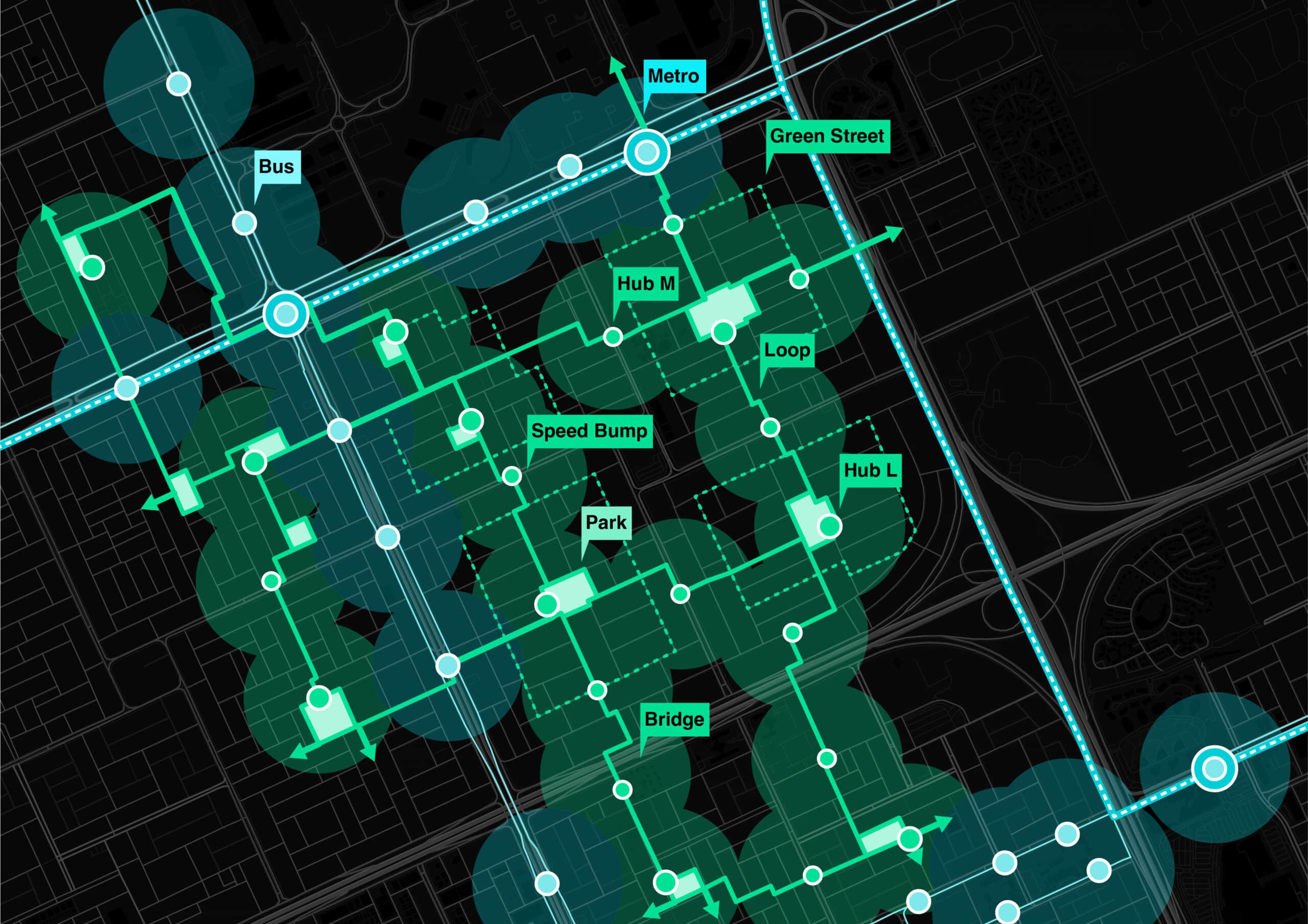
Image from Motopia. A Study in the Evolution of Urban Landscape
Description
DigiCITY: Approach for moving within the digital city
This course delves into the dynamic and evolving landscape of urban mobility through the lens of retro-futurism. By examining the historical context, current trends, and future possibilities, students will gain a comprehensive understanding of how cities are shaped by planners, users, and technology. The course will address the central question: Who shapes the cities – the planner, the user, or the technology?
The use of data and digital technologies allows cities to make informed decisions about urban planning and mobility. By analyzing traffic patterns, public transportation usage, and other data points, cities can optimize routes, reduce congestion, and improve public transit systems. By prioritize the needs and preferences of residents. By involving citizens in the planning process and using technology to gather feedback, cities can create more livable and user-friendly environments.
The programme is a collaborative endeavor where students work in groups to explore, understand, and shape solutions that can work to reduce the prioritization of the car in a real-world context. Students will have the opportunity to explore the relationship between user-behavior, transport choice, land-use planning, transport pricing, urban planning, technology, and vehicle types to understand the potential for shaping the future city.
Project teams will decide how they wish to work with the problem space. It will be possible to work at a scale that makes sense for the project proposal. It is hoped that the range of expertise and backgrounds will present novel approaches to how cities can develop strategies for sustainable personal mobility. Teams will work across a series of project stages to gain insight into how built environment projects manifest in professional practice.
Learning Objectives
At course completion the student will:
– Understand the skills required as a transport consultant/ planner
– Understand the typical project arc for built environment projects
– Understand importance of mobility as a contribution to architectural and urban design
– Be able to think of mobility at a range of scales from the regional network to street scale design
– Understand the implication of induced demand and the impact of cars in contemporary cities
– Be able to identify areas related to city management and city planning where transport strategies can support the shift from a car-centric development
– Design a real-situation project at proof-of-concept level, where a radical alternative to car-centric planning and design is proposed to support the shift to sustainable mobility










